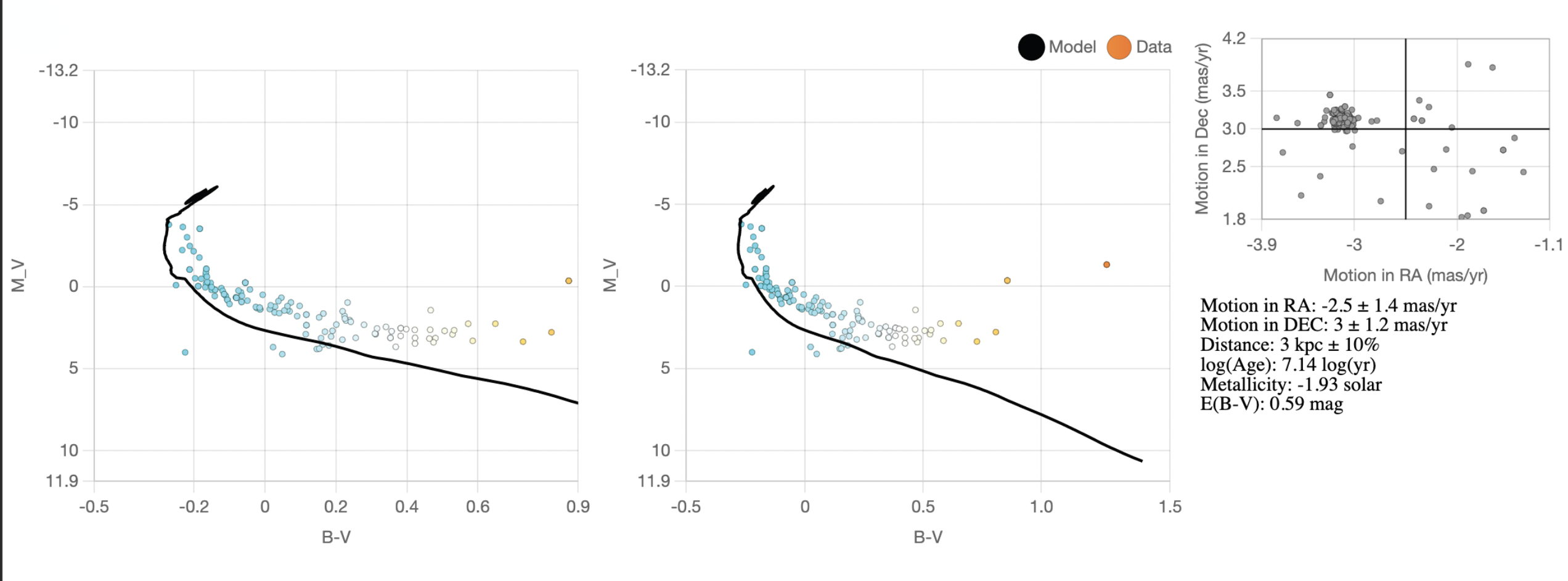NGC 2421
Madison Goll
tsn406
NGC 2421 is an open star cluster in the constellation Puppis which can be found in the Southern Hemisphere. It was first discovered by William Herschel in 1799. NGC 2421 is estimated to be around 23 million years old, which classifies it as a young cluster. The cluster itself is has a size of around eight minutes of arc which gives it a true size of 17 light-years.
In order to create the coloured image of NGC 2421 and to study the cluster as a whole I used Skynet to collect a total of 15 images with varying exposure lengths while using Johnson/Cousins filters, B, V, and R. The “B” filter was set to an exposure length of 60 seconds, the “V” filter was set to an exposure length of 35 seconds, and the “R” filter was set to an exposure length of 20 seconds for a total exposure time of 575 seconds as there was 15 exposures collected in total, 5 images per filter. All the images were set to have at least an hour in between each image taken. After all 15 images were captured by Skynet, I then used Afterglow to create a colour image of the cluster and to obtain the necessary data needed to use Cluster Pro Plus to create a HR diagram and to acquire important information about the cluster such as RA/Dec, metallicity, log(age), E(B-V), and distance.
 Figure 1: Cluster Pro plus Graph of NGC 2421
Figure 1: Cluster Pro plus Graph of NGC 2421
NGC 2421 contains blue stragglers, stars that are bluer and more luminous than the stars in the main sequence. As shown in Fig.1, The blue stragglers are the blue coloured dots that are furthest from the main sequence. Figure 1 also shows that the cluster contains giants on the left side of the of the graph. The cluster itself was not challenging to analyze because the majority of the star cluster fit in the field of view available with the Prompt 5 telescope which allowed me to research and explore the cluster.
In December of 2014, a study was done on NGC 2421 which found the cluster had a log(age) of around 7.9 while in my Cluster Pro Plus graph, I found the cluster to have a log(age) of 7.14. R. K. S. Yadav and Ram Sagar (2004) found that the distance is 2.2 ± 0.2 kpc while in my graph I found it had a distance of 3.0 ± 0.10. In the same study, it was found that the E(B-V) value was 0.47 ± 0.05. In my graph I found that NGC 2421 had a E(B-V) had a value of 0.59.
If the data found in both the study done in 2014 and 2004 are accurate then the percent error I calculated is 9.62% for log(age) and 26.7% for distance. Gaia archive reports that the Right Ascension and Declination (mas/yr) values for NGC 2421 are -1.63 and 2.24 respectively. These values compared the RA value I found in my graph, -2.5, and the Dec value, 3.

Figure 2: Picture of NGC 2421 taken by Prompt-5 telescope at Cerro-Tololo Inter-American Observatory in Chile then edited to make a colour image using Afterglow.
Overall, this project was extremely beneficial to my knowledge of stars and clusters as it improved my understanding of some basic parameters such as metallicity, RA/Dec, E(B-V), log(age), and distance.